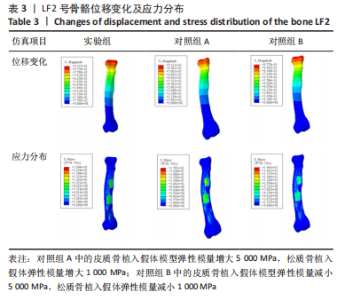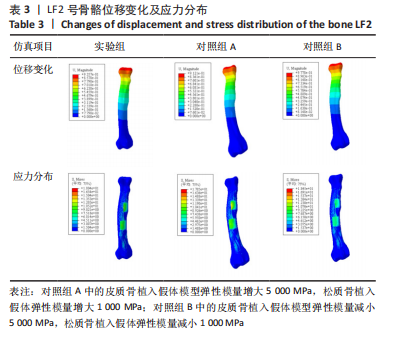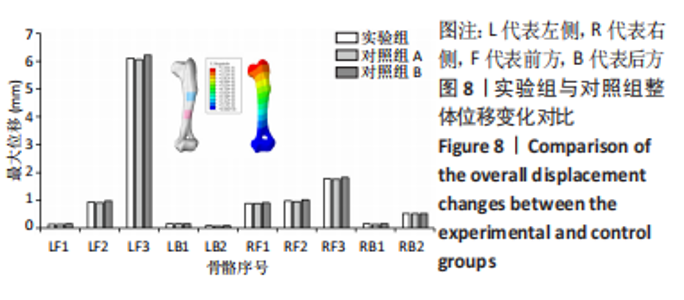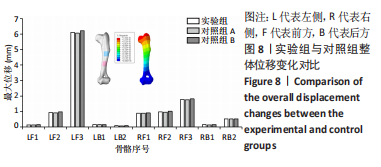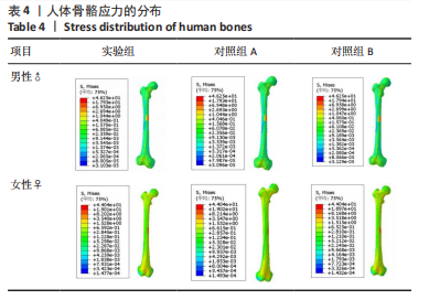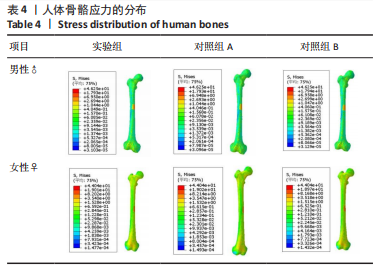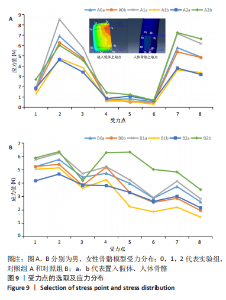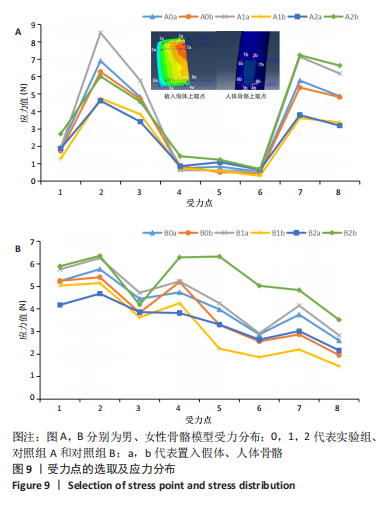[1] FRYDMAN A, SIMONIAN K. Review of models for titanium as a foreign body. J Calif Dent Assoc. 2014;42(12):829-833.
[2] JIN HX, WEI KX, LI JM, et al. Research development of titanium alloy in aerospace industry. Chin J Nonferr Metals. 2015;25(2):280-292.
[3] AMER MA, RODRÍGUEZ PA, RENOU SJ, et al. Use of Human Fascia Lata in Rat Calvarial Bone Defects. Acta Odontologica Latinoamericana Aol. 2015;28(3):231-235.
[4] DENG L, ZHAO X, WEI C, et al. Application of a three-dimensional printed segmental scapula prosthesis in the treatment of scapula tumors. J Int Med Res. 2019;47(11):5873-5882.
[5] BANDYOPADHYAY A, MITRA I, BOSE S. 3D Printing for Bone Regeneration. Current Osteoporosis Reports. 2020;18(5):1-10.
[6] 安明勋.人工髋关节假体的设计及界面应力分析[J]. 中国组织工程研究,2012,16(30):5634-5638.
[7] 王金良,骆晓飞,魏瑄,等. 更换长柄股骨假体结合内固定治疗假体松动型股骨假体周围骨折[J]. 中华创伤骨科杂志,2016,18(2): 169-171.
[8] 杨攀,章莹,刘坚. Vancouver B1型股骨假体周围骨折内固定治疗进展[J]. 中国骨科临床与基础研究杂志,2012,4(6):455-459.
[9] 恽常军,钱文杰,张杰,等. 肱骨近端锁定接骨板固定治疗Vancouver B1型股骨假体周围骨折生物力学特性的有限元分析[J]. 中华创伤骨科杂志,2021,23(9):798-803.
[10] 徐祥钧,王超,宋群山,等. 全膝关节置换假体植入的最佳角度选择[J]. 中国组织工程研究,2023,27(4):612-618.
[11] 白长双, 程维, 郭建平,等. 3D建模与快速成型技术在个体化膝关节假体术中的应用[J]. 北华大学学报(自然科学版),2018,19(3): 342-345.
[12] MIRCHESKI I, GRADIAR M. 3D finite element analysis of porous Ti-based alloy prostheses. Comput Methods Biomech Biomed Eng. 2016; 19(14):1531-1540.
[13] SURMENEVA MA, SURMENEV R, CHUDINOVA EA, et al. Fabrication of multiple-layered gradient cellular metal scaffold via electron beam melting for segmental bone reconstruction. Mater Design. 2017;133: 195-204.
[14] 唐刚, 王建革, 罗红霞. 髋关节置换前后不同步态下股骨应力分布[J]. 医用生物力学,2015,30(2):143-147.
[15] 刘建国. 应力遮挡效应对骨折愈合的影响[J]. 医用生物力学,1992, 7(2):138-139.
[16] 赵新文. 锁定钢板应力遮挡效应的实验研究[D]. 西安:第四军医大学,2012.
[17] 蔡迅梓,严世贵,戴雪松. 全膝置换术后应力遮挡致骨量丢失的研究进展[J]. 中华外科杂志,2006,44(20):1434-1436.
[18] 白凤德,朱兴华. 加压钢板内固定负重状态下应力遮挡效应的生物力学实验研究[J]. 白求恩医科大学学报,1998,24(3):268-270.
[19] 李宁远,龚亚莉,刘煊文,等. 不同材料人工髋关节假体对骨界面应力分布及生物力学的影响[J]. 中国组织工程研究,2016,20(9): 1268-1274.
[20] 付君, 倪明, 陈继营,等. 个性化3D打印多孔钛合金加强块重建重度髋臼骨缺损的生物相容性和生物力学研究[J]. 中国矫形外科杂志,2018,26(10):945-950.
[21] WANG X, XU S, ZHOU S, et al. Topological Design and Additive Manufacturing of Porous Metals for Bone Scaffolds and Orthopaedic Implants: A Review. Biomaterials. 2016;83:127-141.
[22] WEN CE, YAMADA Y, HODGSON PD. Fabrication of novel TiZr alloy foams for biomedical applications. Mater Sci Eng C. 2006;26(8):1439-1444.
[23] PARTHASARATHY J, STARLY B, RAMAN S. A design for the additive manufacture of functionally graded porous structures with tailored mechanical properties for biomedical applications. J Manufact Proc. 2011;13(2):160-170.
[24] KOPPERDAHL DL, MORGAN EF, KEAVENY TM. Quantitative computed tomography estimates of the mechanical properties of human vertebral trabecular bone. J Orthop Res. 2002;20(4):801-805.
[25] PEI X, ZHANG B, FAN Y, et al. Bionic mechanical design of titanium bone tissue implants and 3D printing manufacture. Mater Lett. 2017; 208(1):133-137.
[26] LEVINE B. A New Era in Porous Metals: Applications in Orthopaedics. Adv Eng Mater. 2010;10(9):788-792.
[27] LIU T, CHEN Y, APICELLA A, et al. Effect of Porous Microstructures on the Biomechanical Characteristics of a Root Analogue Implant: An Animal Study and a Finite Element Analysis. ACS Biomater Sci Eng. 2020;6(11):6356-6367.
[28] FROST HM. A 2003 update of bone physiology and Wolff’s Law for clinicians. Angle Orthod. 2004;74(1):3-15.
[29] LI G, WANG L, PAN W, et al. In vitro and in vivo study of additive manufactured porous Ti6Al4V scaffolds for repairing bone defects. Rep. 2016;6:34072.
[30] MELCHELS FPW, DOMINGOS MAN, KLEIN T. Additive manufacturing of tissues and organs. Prog Poly Sci. 2012;37(8):1079-1104.
[31] CHLEBUS E, KUZNICKA B, KURZYNOWSKI T, et al. Microstructure and mechanical behaviour of Ti-6Al-7Nb alloy produced by selective laser melting. Mater Charact. 2011;62(5):488-495.
[32] PARTHASARATHY J, STARLY B, RAMAN S, et al. Mechanical evaluation of porous titanium (Ti6Al4V) structures with electron beam melting (EBM). J Mech Behav Biomed Mater. 2010;3(3):249-259.
[33] PLYUSNIN A, KULKOVA J, ARTHURS G, et al. Biological response to an experimental implant for tibial tuberosity advancement in dogs: A pre-clinical study. Res Vet Sci. 2020;128:183-196.
[34] LUANGPHAKDY V, WALKER E, SHINOHARA K, et al. Evaluation of Osteoconductive Scaffolds in the Canine Femoral Multi-Defect Model. Tissue Eng Part A. 2013;19(5-6):634-648.
[35] RASMUSSEN J, TRHOLM S, ZEE MD. Computational analysis of the influence of seat pan inclination and friction on muscle activity and spinal joint forces. Int J Industr Ergon. 2009;39(1):52-57.
[36] SYLVESTRE PL, VILLEMURE I, AUBIN CE. Finite element modeling of the growth plate in a detailed spine model. Med Biol Eng Comput. 2007;45(10):977-988.
[37] Rho JY, Kuhn-Spearing L, Zioupos P. Mechanical properties and the hierarchical structure of bone. Medical Eng Phys. 1998;20(2):92.
[38] 中华人民共和国国家质量监督检验检疫总局. 成年人人体惯性参数. 中华人民共和国国家标准GB/T 17245-2004. 2004.
[39] JABIR RA, FRANSISKUS MA, IFRAN S, et al. The Needs of Current Implant Technology in Orthopaedic Prosthesis Biomaterials Application to Reduce Prosthesis Failure Rate. J Nanomat. 2016;2016:1-9.
[40] PAWELEC KM, CHAKRAVARTY S, HIX JML, et al. Design Considerations to Facilitate Clinical Radiological Evaluation of Implantable Biomedical Structures. ACS Biomater Sci Eng. 2021;7(2):718-726.
[41] BANDYOPADHYAY A, MITRA I, BOSE S. 3D Printing for Bone Regeneration. Curr Osteoporos Rep. 2020;18(5):505-514.
[42] 邵煜,黄平,李正东,等. 人体胸廓骨骼三维有限元模型的构建及生物力学分析[J]. 法医学杂志,2013,29(2):81-85.
[43] 林婷婷. 乘员人体骨骼系统参数化建模研究[D]. 长春:吉林大学, 2014.
[44] 何海军. 基于CT图像建立可供动态力学模拟分析的股骨头坏死有限元模型[J]. 中国中医骨伤科杂志,2016,24(9):5-10.
|
